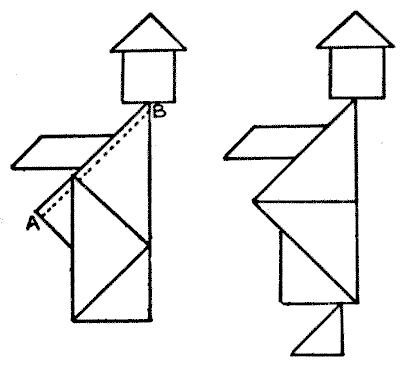(related to Problem: A Tangram Paradox)
The diagrams will show how the figures are constructed — each with the seven Tangrams. It will be noticed that in both cases the head, hat, and arm are precisely alike, and the width at the base of the body the same. But this body contains four pieces in the first case, and in the second design only three. The first is larger than the second by exactly that narrow strip indicated by the dotted line between A and B. This strip is therefore exactly equal in area to the piece forming the foot in the other design, though when thus distributed along the side of the body the increased dimension is not easily apparent to the eye.

This eBook is for the use of anyone anywhere in the United States and most other parts of the world at no cost and with almost no restrictions whatsoever. You may copy it, give it away or re-use it under the terms of the Project Gutenberg License included with this edition or online at http://www.gutenberg.org. If you are not located in the United States, you'll have to check the laws of the country where you are located before using this ebook.